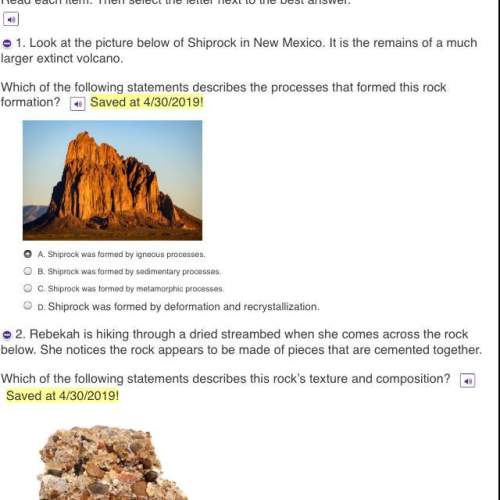
Biology, 12.04.2021 19:50 agarcia24101993
How do desert mice maintain osmotic homeostasis? the sandy inland mouse (leggadina hermannsburgensis) is an australian desert mammal that can survive indefinitely on a diet of dried seeds without drinking water. to study this species' adaptations to its arid environment, researchers conducted a laboratory experiment in which they controlled access to water. nine captured mice were housed in individual cages and given birdseed (10% water by weight) to eat. in part a of the study, the mice also had unlimited access to tap water; in part b of the study, they were not given any additional water for 35 days, similar to conditions in their natural habitat. for each mouse at the end of each part of the study, the researchers measured the osmolarity and urea concentration of the urine and blood. g?

Answers: 1
Another question on Biology

Biology, 22.06.2019 00:30
One gene can influence trait(s). one trait can be determined by gene(s).
Answers: 1

Biology, 22.06.2019 06:50
The kidney filters potentially toxic substances in the blood, and thus “clears” the blood of those substances. this clearance function is dependent upon and proportional to the diffusion gradient of the substance across filtering capillaries, i.e. if the concentration of the substance is doubled, twice as much will be cleared from each ml of blood that is filtered. suppose that the body produces a constant amount of a substance x per unit of time. the kidneys eliminate substance x at a rate directly proportional to the concentration of the substance and the volume of blood cleared each minute (c): elimination = c × [x], where [x] is the steady-state concentration of substance x. imagine an individual with an initial concentration of x equal to [x]0 who develops kidney disease. her baseline clearance c0 drops to one half of the original (½c0). what is the new steady state concentration of x? (for simplicity, assume that substance x is 100% filtered by the kidney).
Answers: 1

Biology, 22.06.2019 10:50
The cretaceous period spanned the time interval between and 65 million years ago. 250 million 144 million 75 million 200 million
Answers: 2

Biology, 22.06.2019 13:00
Land conservation is a worldwide priority. there are several methods to prevent the loss of land due to a variety of reasons. which method is not a way to conserve land? a) sea walls b) rainwater harvesting c) limits on clear cuts of forests d) cut and burn methods of clearing land
Answers: 1
You know the right answer?
How do desert mice maintain osmotic homeostasis? the sandy inland mouse (leggadina hermannsburgensis...
Questions

Physics, 09.09.2021 04:00

English, 09.09.2021 04:00

Chemistry, 09.09.2021 04:00



Arts, 09.09.2021 04:00

English, 09.09.2021 04:00

History, 09.09.2021 04:00

Chemistry, 09.09.2021 04:00

Mathematics, 09.09.2021 04:00

Chemistry, 09.09.2021 04:00

Mathematics, 09.09.2021 04:00

Biology, 09.09.2021 04:00

Advanced Placement (AP), 09.09.2021 04:00

History, 09.09.2021 04:00

Mathematics, 09.09.2021 04:00

Mathematics, 09.09.2021 04:00


Mathematics, 09.09.2021 04:00




